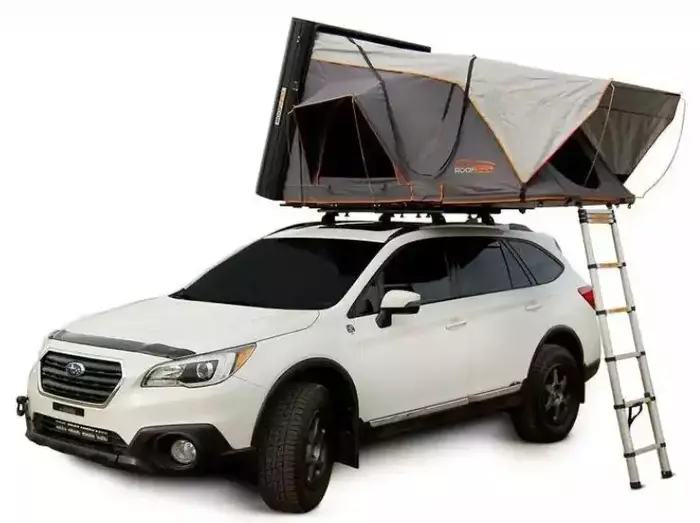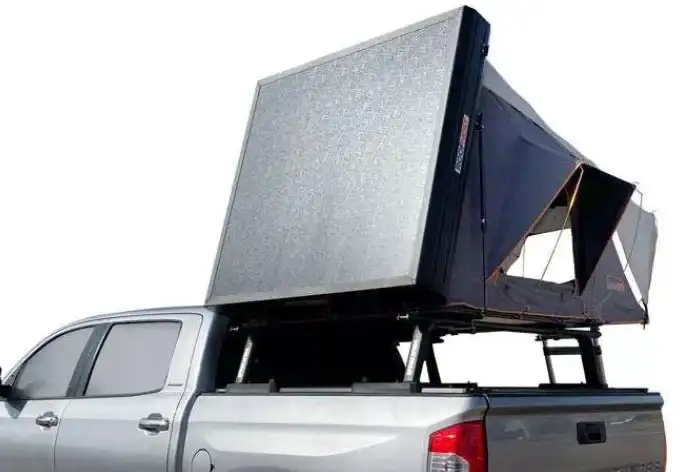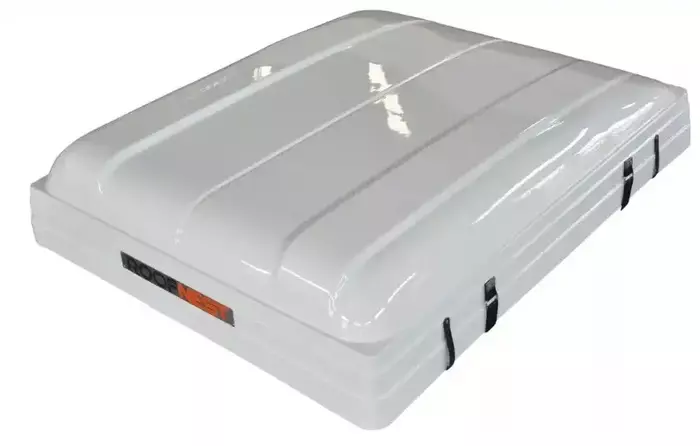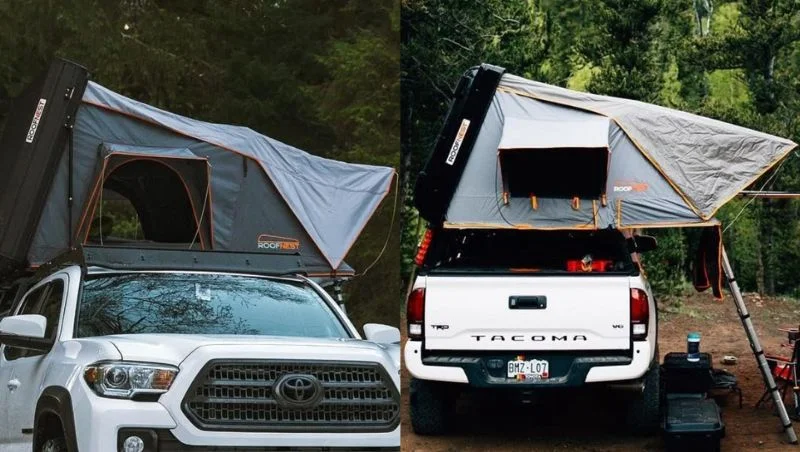The Roofnest Condor Overland and Roofnest Condor belong to the same clamshell hard shell roof top tents group. They look similar, but some features make one of them a much better option. Keep reading.
Why this comparison
This is about two enormously popular roof top tents from the same brand that is well-known in the roof top tents industry. Roofnest has many off-ground tents of this type on the market, sometimes with very similar names and belonging to series of tents.
So it is easy to get confused and lost in details and features. For this reason, I have decided to make this comparison that will include a clear list of shared common features, and tables with differences and with my ratings.
Before I continue, to get some idea, here is the picture of the Roofnest Condor Overland:

Now compare this with the Roofnest Condor and you realize that they are very similar:

Note that they also have the Roofnest Condor XL which is just a larger version of the Roofnest Condor. This is why I use the latter here in the comparison because it is officially in the same capacity group as the Condor Overland.
So it is time now to start with the common features and similarities of these two tents:
- Both Roofnest Condor Overland and Roofnest Condor belong to their Condor series of clamshell roof top tents. All of them are extendable type. This means that when closed for transportation, the hard shell box on the roof of the car is smaller than what you have in the camp when you expand the tent and have it ready for sleeping.
- The manufacturer’s official capacity for both tents is 2-3 people.
- These tents have openings on three sides. This includes two large side windows with awnings, and a large door. All of them are double-layer with a mesh and with a panel.
- There is a skylight window on the roof, and this is the same in both tents. So the inner tent is with a zippered mesh and a zippered panel, and the fly is with a solid translucent window that matches the inner tent skylight window.
- Observe that this skylight opening is a great feature for ventilation. It will work both with the fly and without the fly.
- Extended platform of the tent is supported by the ladder that is included. This is a frequent feature in such expandable clamshell tents.
- You have the same 50 inches (127 cm) peak height in the tent.
- Both come with an LED included.
- The fabric used in these tents is a high quality and very thick polycotton. So this is a heavy 320 gsm material which naturally provides a bit of insulation, and it is also very quiet in the wind. Note that this is thicker than in their Roofnest Sparrow XL and Roofnest Sparrow Adventure XL pop-up tents.
- You have a fly in both and this is the same material, a coated polyoxford with a waterproof rating of 3000 mm. This is an excellent value and you will never need more.
- Shoe bags are included with both tents.
- There are no differences regarding ease of use. They belong to the same type and each of them you can have ready in seconds.
About Roofnest Condor Overland you can see more in this video:
Roofnest Condor Overland and Roofnest Condor differences
In the comparison table below you can see the most important differences:
Weight, lb (kg)
Floor size, in (cm)
Closed size, in (cm)
Area, sq.m
Box thickness, in (cm)
Mattress, in (cm)
Shell
Condor Overland
165 (75)
84 x 55 (213 x 140)
60 x 50 (152 x 127)
3
10 (25)
2 (5.1)
aluminum
Condor
135 (61)
83 x 60 (211 x 152)
60 x 48 (152 x 122)
3.2
12 (30.5)
2.5 (6.4)
ASA/ABS
The meaning of everything in the table is obvious, just to point out a few details:
The width: As you realize, both tents are quite long but the width in the Condor tent is such that it could perhaps accommodate 3 people, say parents and a kid. This is unlikely for the Condor Overland.
The shell: In the Condor Overland this is an all-aluminum structure. You have a 1 inch thick honeycomb aluminum shell with extruded aluminum accessory channels on its perimeter. Note that the top of this tent is completely flat, see how it looks:

In the Condor tent you have an ASA/ABS synthetic hard shell, it is smooth and more aerodynamic, see it here:

So there is no doubt, the shell material is better in the Condor Overland.
Cross bars use: This is about the mentioned accessory channels in the Condor Overland tent. So you can transport your bulky items on the lid of the roof top tent, the picture below shows this with a bicycle.

This is a big advantage of the Condor Overland, and the most important difference of all. You can transport up to 100 pounds (45 kg) here when the box is closed. Even when you open the roof and sleep in the tent, the load can still remain there if it is under 40 pounds (18 kg).
There are no gear attachment options on the lid of the Condor tent.
My rating
With all the parameters presented above, I can now make my rating of these two tents. So here is how it looks:
Weight
Area
Box thickness
Shell material
Gear attachment
Mattress
Condor Overland
Condor
So I give + to the Condor for its weight which is much better, and for its slightly larger area. It gest + also for the mattress which is thicker.
The box thickness is a bit better in the Condor Overland but this is not a big deal. However, the shell in the Condor Overland is aluminum and I am sure this is a much better option than the synthetic hard shell in the Condor tent.
But gear attachment on the lid is a big deal here, and this + for the Condor Overland has an important value.
Places to buy
Roofnest Condor Overland:
Roofnest Condor:
Final thoughts
In summary, the rating for these Roofnest Condor Overland and Roofnest Condor is formally the same, 3 out of 3 for each. But the real value of those + signs given to the Condor Overland is higher. This is about the shell material and gear attachment that make this tent a much better option.
Let me know what you think, there is a comment box below. For more stuff of this type please check under the category Roof Top Tents.
Bookmark this site and keep as a reference, you will always have new texts added here and this will keep you informed. Thank you for reading and have a nice day.

 Hi, I am Jovo, the founder of this Off-Ground Tents site and several other outdoor sites. I have been mountaineering for almost 40 years already, and I have created this site to use as a reference for various types of above ground tents.
Hi, I am Jovo, the founder of this Off-Ground Tents site and several other outdoor sites. I have been mountaineering for almost 40 years already, and I have created this site to use as a reference for various types of above ground tents.